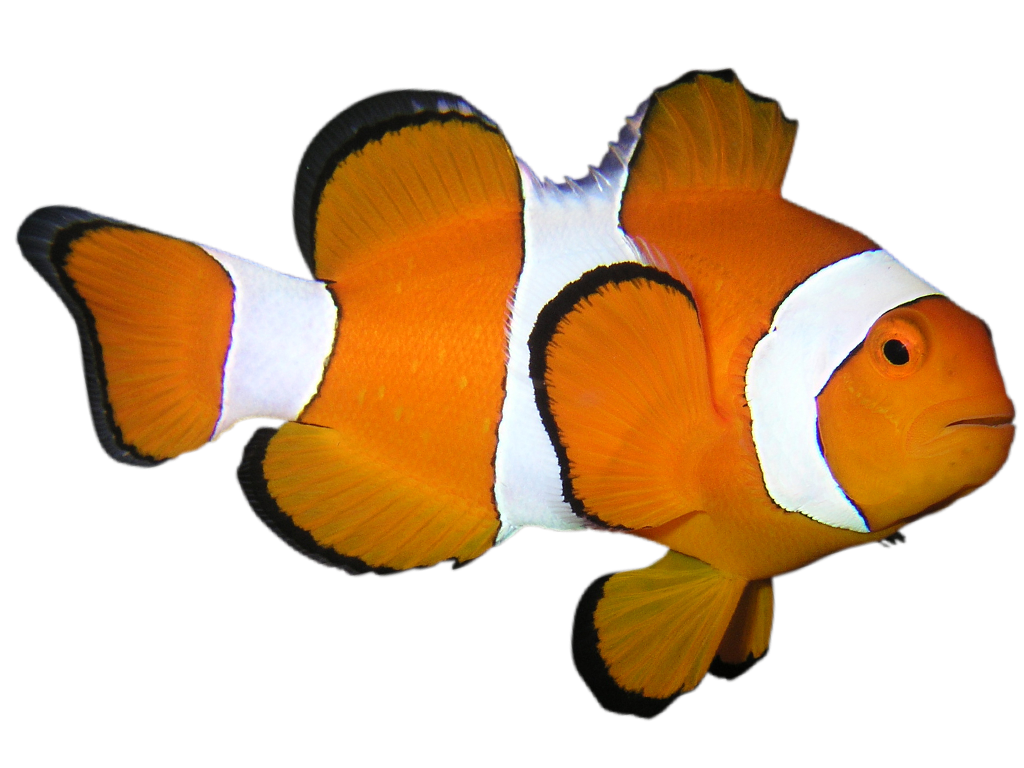Common clownfish
Amphiprion ocellaris

Cooperates with the venomous anemone
Perhaps you recognise the orange and white fish swimming among the tentacles of the anemone? It’s a species known as the common clownfish, which is the fish made famous in the film Finding Nemo. The tentacles of the anemone contain nettle cells, which emit a venom that harms other fish. But not the clownfish! It has a protective layer of mucus on its skin, which makes it immune to the venom of the anemone. This makes the anemone a perfect shelter for the clownfish, as predators prefer to stay away.
But it’s not just the clownfish that benefits from the partnership. The clownfish keeps the anemone clean by eating its leftovers and any parasites, and wafting fresh water over the anemone’s tentacles. When two different species live together in a close relationship, it’s called symbiosis.

Photo: Alexander-Vasenin-CC-BY-SA
The female is in charge of the group
The common clownfish inhabits coral reefs in small groups. There is only one female in the group, and she is the largest and highest in rank. The largest male is her partner, usually for life. He is the only one allowed to reproduce. The female disturbs her male partner so much that he doesn’t grow as big as her. The rest of the fish in the group are younger or smaller males.
The large male subjects the smaller males to the same behaviour that the female subjects him to. This means that they do not get enough food to grow big either. When clownfish breed, the female lays many eggs on a rock near the anemone, which the male guards until they hatch. After spending a few days as larvae, roaming freely in the water, the fry look for their own anemone to inhabit.

Photo: Prilfish-CC-BY
Nemo’s dad should have been Nemo’s mom
All clownfish are born as, and develop into, males. The only way for a new female to develop is when the previous female in a group disappears for some reason. Then the largest remaining male changes sex and becomes the dominant female. The largest juvenile becomes the new dominant male. In the film Finding Nemo, Nemo’s mother has died. Had it been in real life, Nemo’s father would therefore have become Nemo’s new mother!
Following the film Finding Nemo, clownfish became a very popular aquarium fish. They are therefore caught in large numbers, but many beginners are unfamiliar with how to care for a saltwater aquarium. As of yet, the common clownfish is not listed as endangered on the Red List, but there are many indications that it will be in the future.
Distribution worldwide
Coral reefs in the eastern Indian Ocean and the western Pacific Ocean.
White marking = Distribution

Threat based on the Red List

Trade regulations
CITES: Not listed.